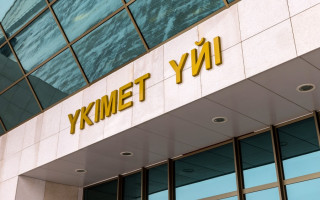Today, steady progress is being observed in the digitalization of public services, the IT industry, artificial intelligence, providing regions with Internet connectivity, and many other areas.
As part of the implementation of the tasks set by the President of the Republic of Kazakhstan in his Address to the People of Kazakhstan “Kazakhstan in the Era of Artificial Intelligence: Current Issues and Their Solution through Radical Digital Transformations,” the Government is actively working to introduce digital technologies that will form the basis for sustainable economic development. This is coordinated by the Digital Headquarters, specially created under the leadership of the Prime Minister of the Republic of Kazakhstan. Today, steady progress is being observed in the areas of digitization of public services, IT industry, artificial intelligence, providing regions with Internet connectivity, and many others.
On the instructions of the Head of State, the Government is carrying out extensive work on the development of the artificial intelligence ecosystem. First of all, attention is paid to creating an appropriate legislative framework. The Senate is considering a draft law “On Artificial Intelligence”, which is aimed at creating a legal framework for the safe and effective development of technologies.
A significant event in October this year was the opening of the international AI center Alem.AI, which is designed to become a factory of ideas and innovations. Various international companies are represented here. Alem.AI should become a key platform for scientific research, startups and international cooperation in the field of AI. The center’s activities will ensure the expansion of the export of Kazakhstani solutions in the field of digitalization, which will give impetus to technological and economic growth. In the future, Kazakhstan should become the intellectual hub of Central Asia.
It is also planned to train 1 million citizens in the basics of artificial intelligence over the next 5 years. Relevant educational programs have been introduced in 20 universities in the country.
National Supercomputer and AI Platform
This year, Kazakhstan launched the National Supercomputing Center — Alem.cloud. Its capabilities are available to government agencies, scientific institutions, universities, businesses, and startups.
The supercomputer will be used to test applied AI models used in government services, including training large language models, developing AI agents, analyzing data, creating content, and performing modeling tasks.
Also, on the instructions of the Head of State, a Digital Headquarters was established, headed by the Prime Minister. A comprehensive plan for the integration of information systems across more than 200 components was approved, which will reduce labor costs, eliminate duplication, and increase the efficiency of government agencies.
To protect data, all government agencies are migrating to the Kazakhstani messenger Aitu. Citizens are provided with free access to eGov, eOtinish, Aitu and many other services, even with a zero balance on mobile communications.
The volume of IT services provided by domestic companies increased from 646 billion tenge in 2021 to 1.74 trillion tenge in 2024. Exports of IT services increased from $60.07 million in 2021 to $690.7 million in 2024. In the first half of 2025, this figure amounted to $515.5 million.
The implementation of programs to support startups and IT companies continues on the Astana Hub platform. Today, the Astana Hub ecosystem has united 1,832 companies, including 465 foreign companies. The revenue of participants in the first half of 2025 amounted to 368.3 billion tenge.
Kazakhstan is actively cooperating with technology giants such as InDrive, Netcracker, Playrix, Telegram, and many others.
Work continues on the transition of public services to electronic format. Today, 90.4% of public services are available online, and the vast majority of 1,448 services can be obtained via the Internet.
90.6% of services are available on smartphones, making the process as convenient as possible for citizens. 39 types of digital documents have been introduced, completely replacing paper counterparts.
Today, 119 cities and 4,906 villages out of 6,179 settlements in Kazakhstan are connected, of which 2,724 are connected using 3G technology, and 2,182 are connected using 4G. Registered Internet access is available in 1,902 villages (ADSL) and 2,654 villages (DSL).
It is planned to connect another 3,000 villages to high-speed Internet by the end of 2027. An additional 504 remote settlements are planned to be connected to the network using satellite technologies. Of these, 176 are already connected via KazSat, and by the end of 2025, another 328 villages will be connected via OneWeb.
In June 2025, an agreement was signed with Starlink, which officially began operating in Kazakhstan on August 13 of this year. Today, Starlink satellite Internet is available in more than 1.7 thousand rural schools.
In total, more than 3,000 rural settlements will be connected to high-speed Internet in 2025-2027.
